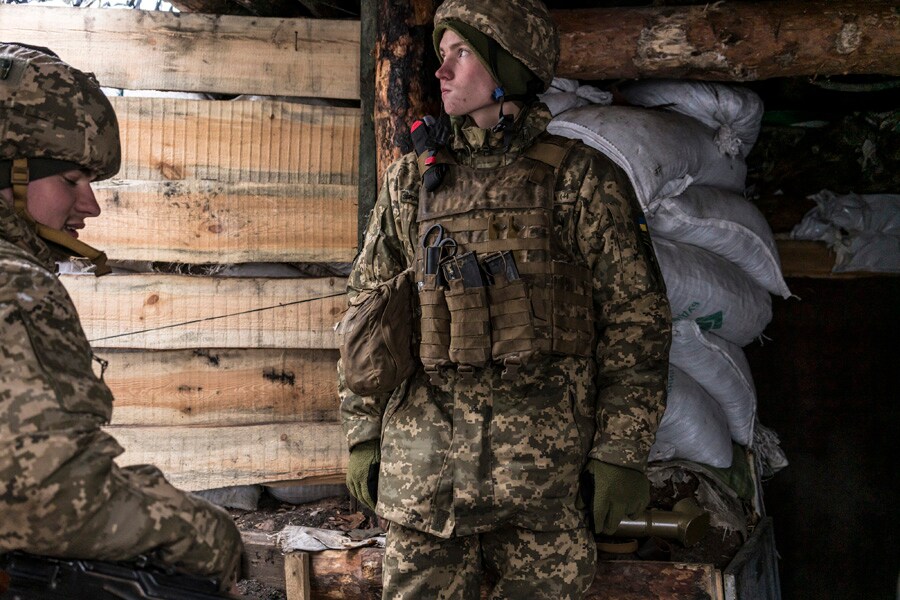
War may loom, but are there off-ramps?
As in all conflicts with roots in the Cold War and its aftermath, the subtext of any negotiation includes how the world's two largest nuclear-armed states manage their arsenals—and use them for leverage
 Ukrainian soldiers with the 24th Brigade in a trench on the front line in Popasna, Ukraine, Jan. 24, 2022. Fears of a Russian invasion of Ukraine are growing, but there are still diplomatic options, with the Biden administration and NATO expected to respond in the next several days to Russian President Vladimir Putin’s demands. (Brendan Hoffman/The New York Times)
Ukrainian soldiers with the 24th Brigade in a trench on the front line in Popasna, Ukraine, Jan. 24, 2022. Fears of a Russian invasion of Ukraine are growing, but there are still diplomatic options, with the Biden administration and NATO expected to respond in the next several days to Russian President Vladimir Putin’s demands. (Brendan Hoffman/The New York Times)
WASHINGTON — Russian troops are encircling Ukraine from three sides. In Washington and Brussels, there are warnings of crushing sanctions if Vladimir Putin orders an invasion. Embassy families — both American and Russian — are being evacuated from Kyiv.
Yet there are still diplomatic options — “off-ramps” in the lingo of the negotiators — and in the next several days the Biden administration and NATO are expected to respond, in writing, to Putin’s far-reaching demands.
The question is whether there is real potential for compromise in three distinct areas: Russia’s demand for ironclad assurances that Ukraine won’t enter NATO; that NATO won’t further expand; and that Russia can somehow restore some approximation of its sphere of influence in the region to before the strategic map of Europe was redrawn in the mid-1990s.
The hardest issue of all defies negotiation: Putin’s demand that Ukraine reverse its “drift” toward the West. That is a matter of national sentiment, and polls show that in the years since Russia’s seizure of Crimea in 2014, Ukrainians are more desirous than ever of joining the Western alliance. Putin’s massing of the troops is likely to accelerate that trend, U.S. officials say, rather than reverse it.
And as in all conflicts with roots in the Cold War and its aftermath, the subtext of any negotiation includes how the world’s two largest nuclear-armed states manage their arsenals — and use them for leverage.
©2019 New York Times News Service







